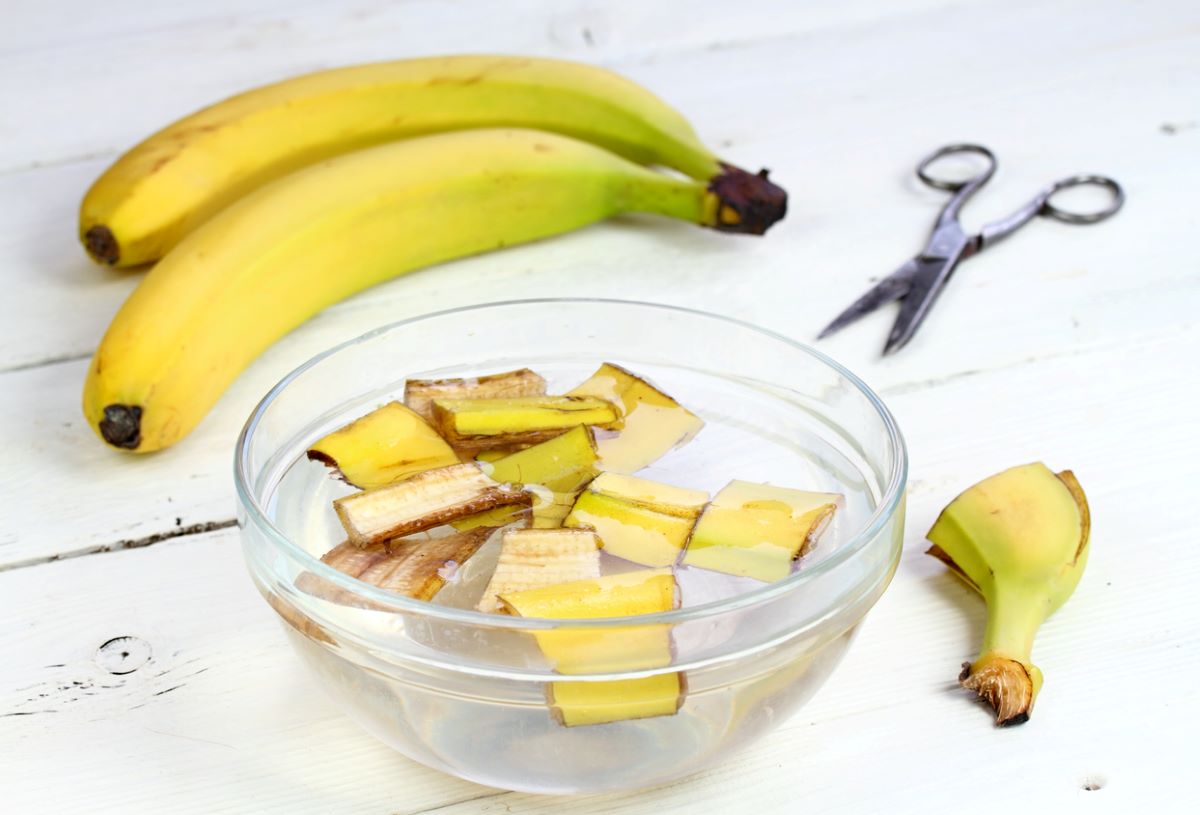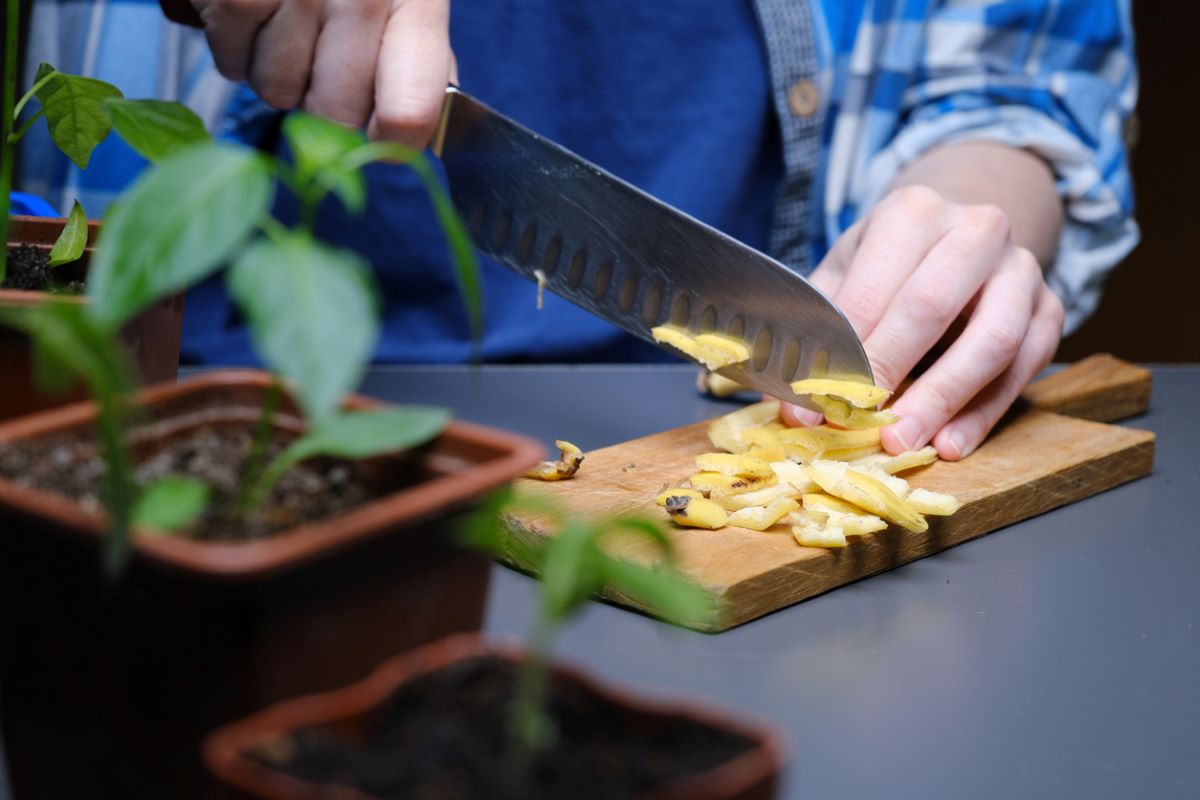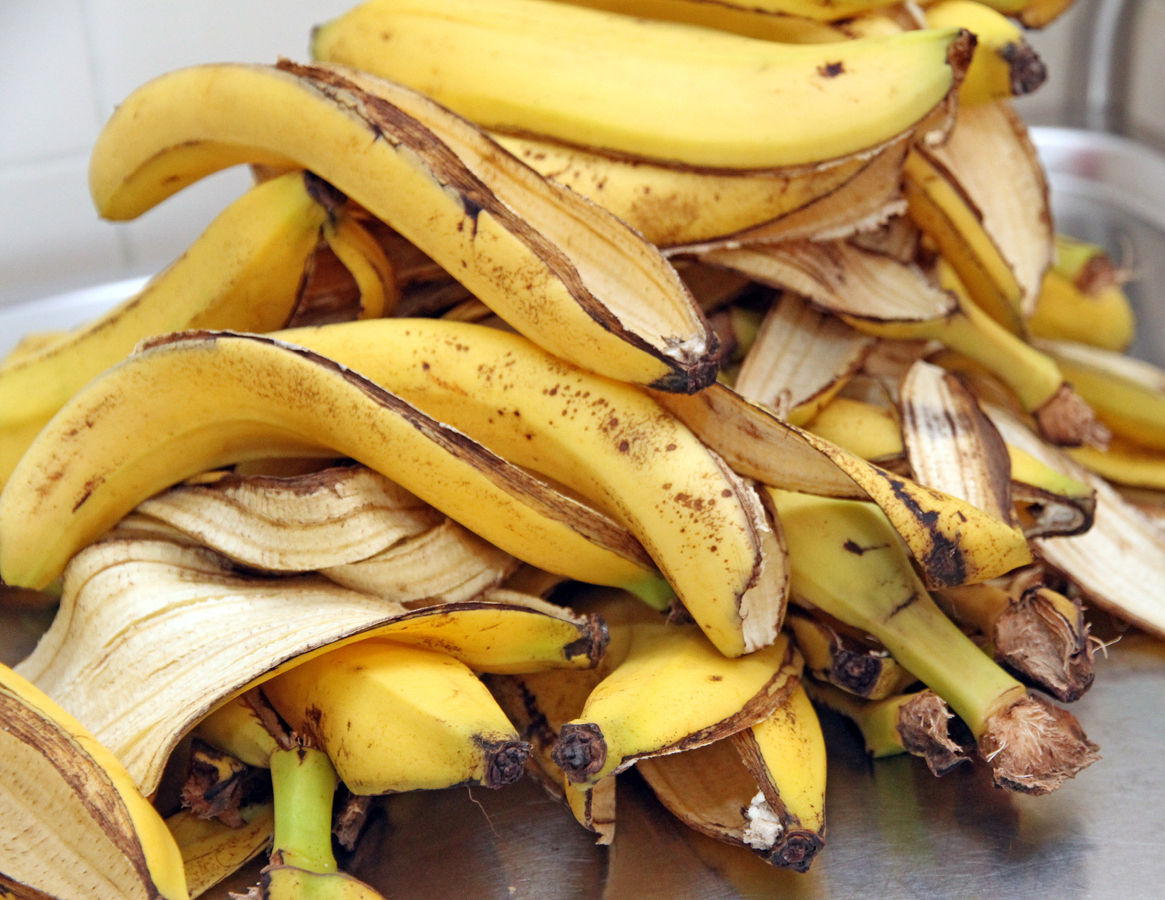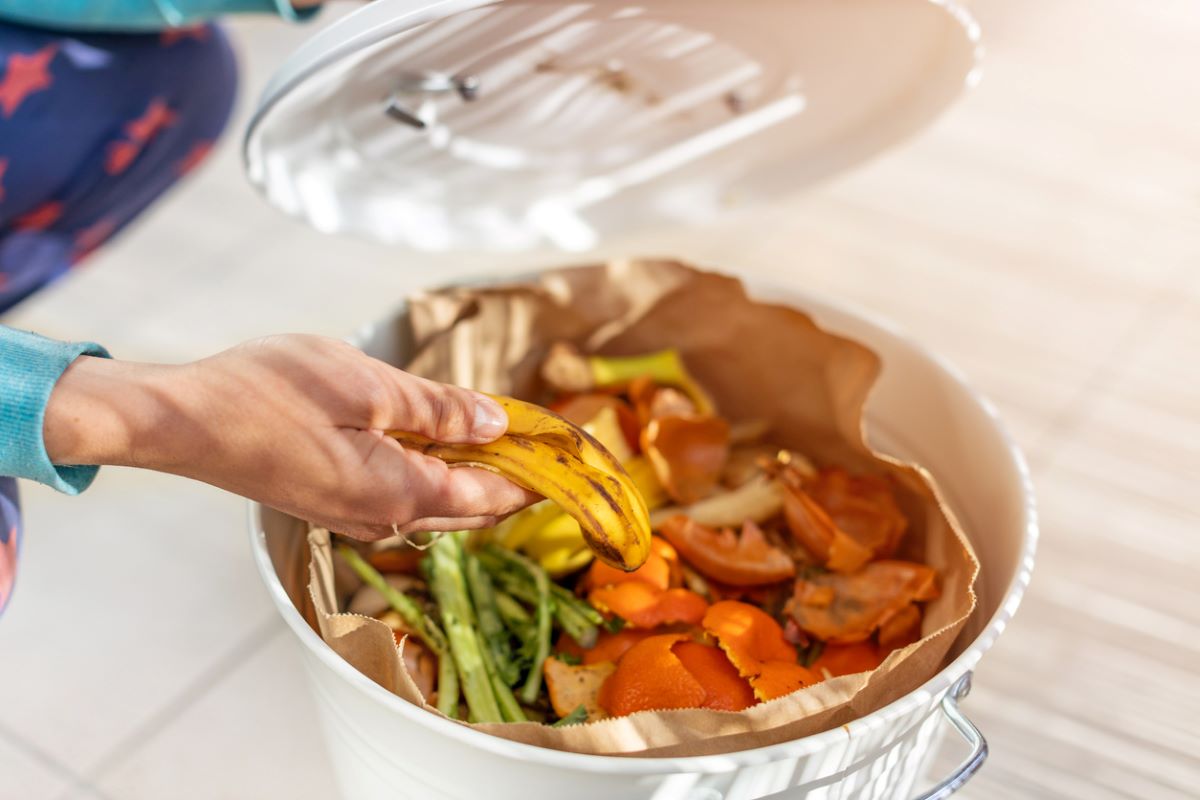

We may earn revenue from the products available on this page and participate in affiliate programs. Learn More ›
Q: I recently saw a viral video recommending that gardeners make banana water for plants. Is banana water an effective natural fertilizer that can help my garden flourish? What are its benefits, and how can I make my own at home?
A: If you want your garden to grow, then you know you need some type of fertilizer. While commercial chemical or synthetic fertilizer can be convenient, it’s often costly, harsh on plants, and bad for the environment. Many gardeners are turning to homemade recipes to create natural fertilizers from everyday products.
Looking for uses for banana peels after you’re done eating the fruit? Rather than tossing them in the trash, consider turning them into plant food. In theory, making banana water could add some potassium and other nutrients to your garden soil. But regardless of how popular it is on the internet, the jury is still out on the effectiveness of banana water as fertilizer. Read on to learn what banana water is, how to make it, and a better option for using banana peels in your garden.
What is banana water?

Similar to compost tea, banana water or banana peel tea potentially can be used as homemade fertilizer for your garden. Banana peels have plenty of nutrients—such as potassium, calcium, magnesium, and manganese—to help your plants thrive. There are a couple of different DIY recipes for banana water making rounds on social media platforms such as TikTok. Bear in mind, however, that the effectiveness of these recipes is not backed by scientific research.
The first option is to soak the banana peels to encourage nutrients to leach into the water over time. Keep a pitcher or glass container mostly filled with water. As you eat bananas, add the peels to the water until the container is full or you run out of bananas. Some variations call for chopping up or pulverizing the peels in a blender with the intention of releasing as many nutrients into the water as possible. Cover the container to prevent mold from forming. After a few weeks, the peels will turn black and the water will darken. Once you notice this, strain the water from the peels and apply the banana water to your plants.
Another option is to boil the banana water to create banana peel tea. Start with the same process of soaking the peels in water. As with the soaking method, some recommend chopping or pulverizing your banana peels in a blender before boiling them. After a few days, boil the water for 30 to 45 minutes to further break down the fibers. Strain the liquid and allow it to cool. To apply the banana peel tea, dilute the liquid to five parts regular water to one part tea.
You may also come across recipes for making fermented banana water for plants. Most call for equal parts of very ripe bananas and dark brown sugar. Cut up the bananas, add some brown sugar, and then store in an airtight container at room temperature for two weeks. Use regular water to dilute the fermented banana water before applying it in your garden.
RELATED: Homemade Plant Food Recipe for Indoor and Outdoor Plants

Banana peels are high in potassium, a macronutrient that supports plant growth.
The three most important macronutrients for plants are nitrogen, phosphorus, and potassium. They form the basis of store-bought fertilizers. Banana peels can’t supply all the potassium plants need, but gathering any nutrients you can from otherwise discarded peels is unlikely to harm the soil or plants. One important caveat: Since many bananas are grown using pesticides, you should always use organic bananas to avoid seeping harmful chemicals into your garden.
Potassium helps plants efficiently move water and nutrients between its cells, establish healthy roots, create blossoms, produce fruit, fight off disease, and survive periods of drought. Banana peels especially benefit flowering and fruit-bearing plants.
When plants do not get enough potassium, they become less resistant to drought, pests, disease, and other threats. If your plants are potassium-deficient, they will have certain symptoms. Look for curling leaf tips, yellowing between leaf veins and on the bottom of the plant, brown spots or veins forming on older leaves, and purple spots appearing on undersides of leaves. You may also notice plant growth slowing down or completely stopping.

Traditional composting is still the best method for using banana peels for fertilizing plants.
While using banana water and banana peel tea for plants is trendy, it’s unclear if soaking banana peels in water extracts enough potassium to make a difference. Since plants can only absorb nutrients that have been broken down by microbes and fungi, it’s more beneficial to add your banana peels to the compost bin instead. While composting banana peels can take up to a year to break down into a usable, nutrient-rich plant food, it’s the best bet for ensuring your garden gets the most out of your efforts.
RELATED: 8 Top Tips for How to Use Compost
